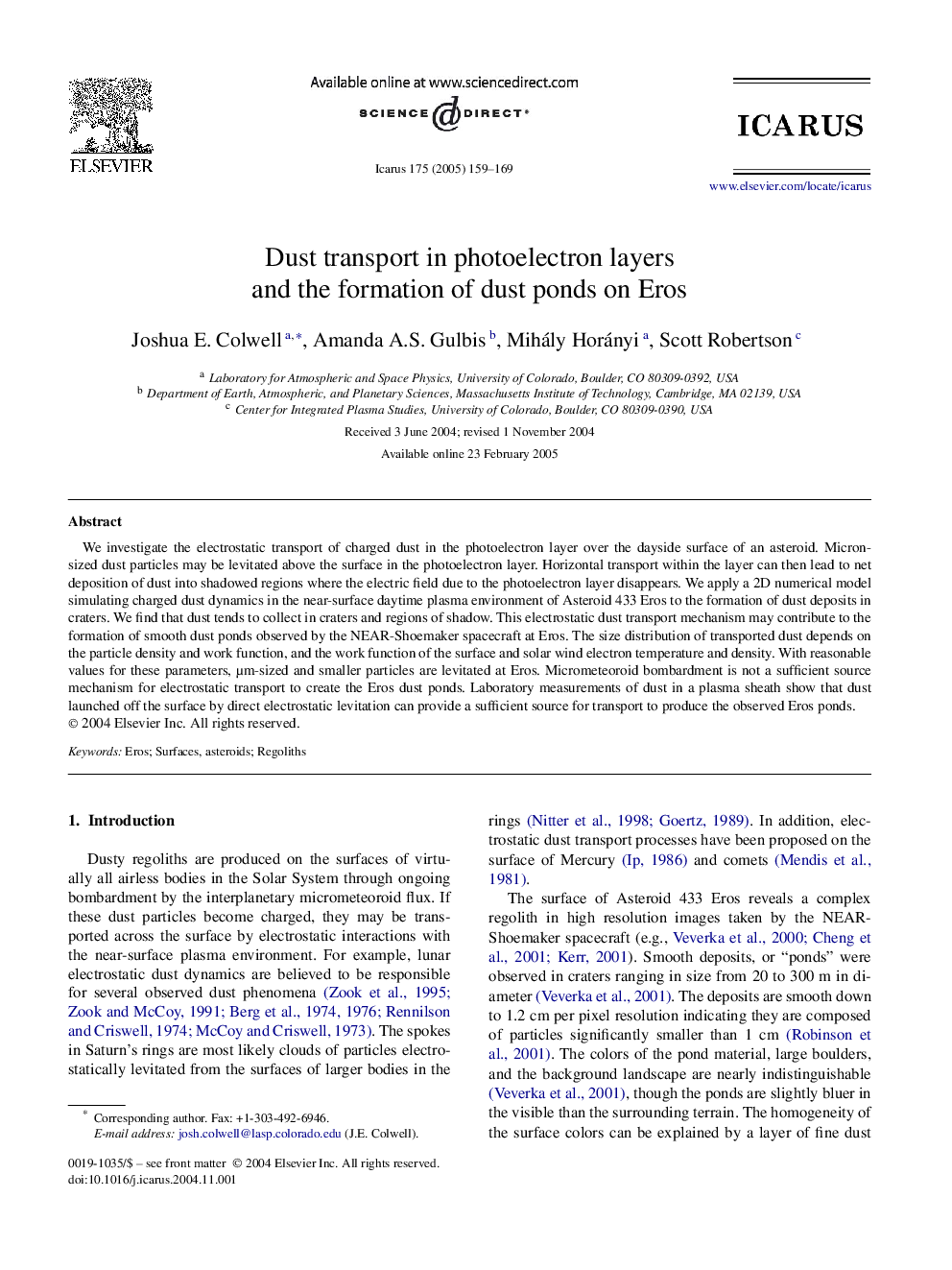| Article ID | Journal | Published Year | Pages | File Type |
|---|---|---|---|---|
| 10702096 | Icarus | 2005 | 11 Pages |
Abstract
We investigate the electrostatic transport of charged dust in the photoelectron layer over the dayside surface of an asteroid. Micron-sized dust particles may be levitated above the surface in the photoelectron layer. Horizontal transport within the layer can then lead to net deposition of dust into shadowed regions where the electric field due to the photoelectron layer disappears. We apply a 2D numerical model simulating charged dust dynamics in the near-surface daytime plasma environment of Asteroid 433 Eros to the formation of dust deposits in craters. We find that dust tends to collect in craters and regions of shadow. This electrostatic dust transport mechanism may contribute to the formation of smooth dust ponds observed by the NEAR-Shoemaker spacecraft at Eros. The size distribution of transported dust depends on the particle density and work function, and the work function of the surface and solar wind electron temperature and density. With reasonable values for these parameters, μm-sized and smaller particles are levitated at Eros. Micrometeoroid bombardment is not a sufficient source mechanism for electrostatic transport to create the Eros dust ponds. Laboratory measurements of dust in a plasma sheath show that dust launched off the surface by direct electrostatic levitation can provide a sufficient source for transport to produce the observed Eros ponds.
Related Topics
Physical Sciences and Engineering
Earth and Planetary Sciences
Space and Planetary Science
Authors
Joshua E. Colwell, Amanda A.S. Gulbis, Mihály Horányi, Scott Robertson,
